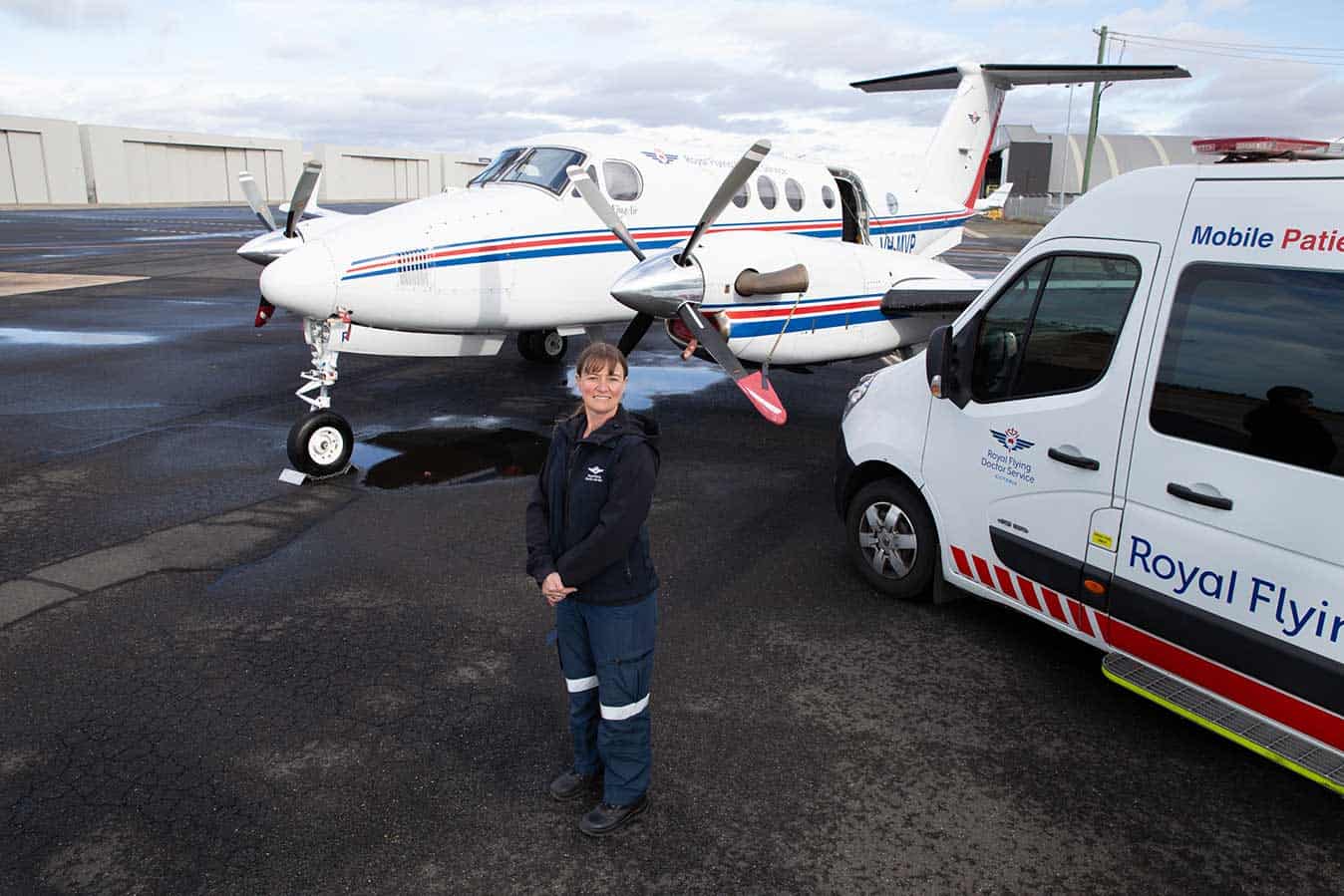Royal Flying Doctor Service senior flight nurse Jenine Harmer counts joining the vital healthcare operation as the best decision she has ever made.
“It gives you more experience. It gives you confidence. More skills. More independence. It’s just fantastic,” she says.
“Nursing is great because you can work in so many areas. It’s just another area where we get to utilise our skills and help people.”
Flight nurses require emergency department experience, midwifery qualifications and three to five years of postgraduate experience.
A nurse/midwife of 20 years, Jenine had the experience under her belt and signed up to the RFDS about six years ago because of its sense of adventure.
“I thought it would be fantastic working in rural areas providing nursing care to people who don’t have the same access as those who live in the cities.
“It was a bit of adventure. Not knowing what was going to happen the next day and where you were going to go. The autonomy that you practice and working in an isolated environment and the challenges that brings.”
The RFDS provides primary healthcare and 24-hour emergency service to Australians living, working, or travelling in rural and remote parts of the country.
Services include telehealth consultations, fly-in fly-out GP and Nurse clinics and mobile dental services.
In the air and on the road, the RFDS transfers non-critical patients from small hospitals in rural and remote areas to metropolitan areas for more specialised care.
Similarly, it also provides emergency evacuations throughout rural and remote Australia for people who are seriously ill or injured and require urgent medical attention.
In 2017/18, 38,052 Australians were flown by the RFDS’ expert medical, nursing and aviator teams.
Jenine spent about two years working in Queensland with the RFDS in emergency retrieval.
The role involved flying out to rural areas and into the hospitals that required help, then transferring patients to a major metropolitan hospital.
She says jobs ranged from stabilising patients who had suffered motorbike or horse riding accidents on farms to being called out to a rural hospital to help with a birth.
In the air, flight nurses generally travel solo with a pilot but in complicated cases that require ventilation a doctor joins the team.
“The main thing is to stabilise the patient and then transport them as quick as possible. You’re not actually doing any surgery or anything you’re just keeping them stable for the trip until you get them definitive care.”
Jenine says flight nurses need to be prepared for all kinds of situations.
“You practice autonomously. You have to deal with things as they happen. You don’t have all the equipment around you. You don’t have all the assistance of all the doctors and nurses. You’ve got to be able to think quickly and adapt into your environment, which is really challenging and exciting.”
Jenine lists dealing with extreme weather conditions as one of the biggest hurdles to carrying out a transfer.
“If the weather turns bad or storms come across you can’t transfer patients,” she explains.
“We would get stuck in hospitals overnight or in locations on the tarmac and we just couldn’t fly out because the weather came in quick. Of course, if anything happened with the aircraft, you would also be stuck wherever you landed last.”
It is also important that flight nurses look after themselves, she adds.
“You do have to look after yourself because you’re working in an environment where you’re subjected to dehydration and vibration and higher altitudes. There’s a lot of things you’ve got to take into account. You’ve got to be really well prepared.”
After finishing her stint in Queensland, Jenine moved to Victoria and currently works as a flight nurse undertaking non-emergency transfers of patients from rural and remote areas to larger hospitals.
Assignments are wide-ranging and include everything from transferring people who need to get home after being injured on holidays to helping people move closer to their loves ones.
She works Monday to Friday in the air and in the Emergency Department at Sunshine Hospital on the weekends, which she says allows her to cement her skills and maintain a link with the acute hospital environment.
While no longer providing emergency evacuations, Jenine says the role is just as rewarding.
“It’s still as exciting in the sense that you’re operating in an isolated environment autonomously and you never know where you’re going from one day to the next,” she says.
“I love the flying. I love the challenges and just the added experience. It gets you out of the hospital as well. You can still help people and be out of the hospital environment, which can have its positives.”
Jenine says retrieval nursing with the RFDS is all about providing care and treatment to people that can’t access it normally.
She suggested nurses who enjoy challenges and are seeking greater independence in their practice should consider hopping on board.
To find out more visit www.flyingdoctor.org.au








